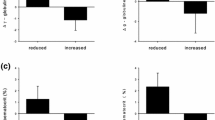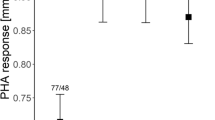Abstract
Nestling birds produced later in the season are hypothesized to be of poor quality with a low probability of survival and recruitment. In a Spanish population of house martins (Delichon urbica), we first compared reproductive success, immune responses and morphological traits between the first and the second broods. Second, we investigated the effects of an ectoparasite treatment and breeding date on the recapture rate the following year. Due probably to a reverse situation in weather conditions during the experiment, with more rain during rearing of the first brood, nestlings reared during the second brood were in better condition and had stronger immune responses compared with nestlings from the first brood. Contrary to other findings on house martins, we found a similar recapture rate for chicks reared during the first and the second brood. Furthermore, ectoparasitic house martin bugs had no significant effect on the recapture rate. Recaptured birds had similar morphology but higher immunoglobulin levels when nestlings compared with non-recaptured birds. This result implies that a measure of immune function is a better predictor of survival than body condition per se.
Similar content being viewed by others
Author information
Authors and Affiliations
Rights and permissions
About this article
Cite this article
Christe, P., de Lope, F., González, G. et al. The influence of environmental conditions on immune responses, morphology and recapture probability of nestling house martins (Delichon urbica). Oecologia 126, 333–338 (2001). https://doi.org/10.1007/s004420000527
Received:
Accepted:
Published:
Issue Date:
DOI: https://doi.org/10.1007/s004420000527




